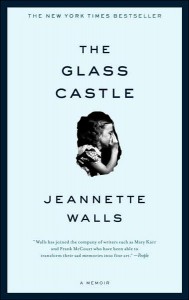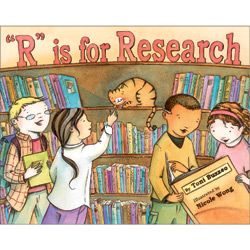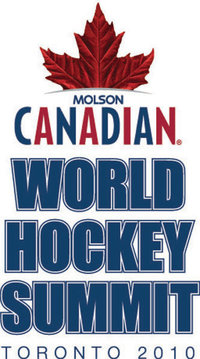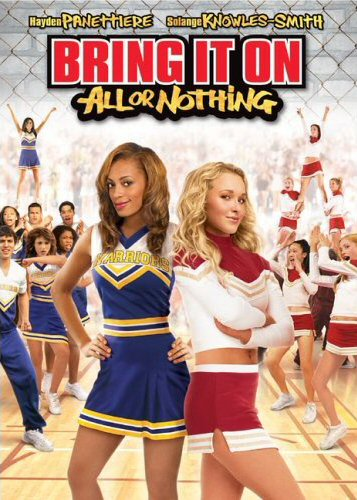Writing from Twitter
![]() Twitter debuted “Twitter for Newsrooms” on Monday as an online guide for journalists on how to best use the social networking site. It focuses on enhancing the quality of online content as well as the quick dissemination of that content to a wider audience.
Twitter debuted “Twitter for Newsrooms” on Monday as an online guide for journalists on how to best use the social networking site. It focuses on enhancing the quality of online content as well as the quick dissemination of that content to a wider audience.
I think this is a great idea. As long time readers of this blog know, I’ve been a fan of Twitter for years and I regularly use it to promote my own writing and as a forum for my alleged wit.
There’s no better way to keep track of breaking news stories. I’ve learned about dozens of trades through the Trending Topics feature and have often learned about other hot stories through Twitter. In fact, most of the feature stories I read I’ve discover through Twitter.
In other words, I’m really looking forward to exploring TfN.
Coincidentally, the Canadian Press had been using Twitter as a source for quotes for some time, taking the tweets of athletes (or politicians or whoever) from verified accounts to add colour to our news stories.
Recently, CP’s sports department has composed entire stories from these tweets, adding greater context to developing stories. I’ve written two of these articles.
The first was reactions from NHLers (and NBA star Steve Nash) on the pivotal Game 6 of the Stanley Cup final between the Vancouver Canucks and Boston Bruins.
“NHLers react on Twitter to Game 6 action”
Watching Game 6 of the Stanley Cup final brought back some emotional memories for Bret Hedican, something the retired NHL veteran was only too happy to share with the world.
Hedican was one of several NHL players, both current and retired, took to the social networking site Twitter on Monday night to weigh in on the Boston Bruins' 5-2 victory over the Vancouver Canucks.
"I've won and lost a Stanley Cup game 7!," Hedican tweeted. "I remember both like they were yesterday! Heartbreak & Elation!" (Read more…)
On Sunday we applied the same idea to the opening match of FIFA’s Women’s World Cup as Canada took on Germany.
“Soccer fans cheer on Canadian women against Germany via Twitter in World Cup”
As Christine Sinclair scored for Canada’s in its 2-1 loss to Germany at FIFA’s Women’s World Cup on Sunday, fans and players took to Twitter, often tweeting directly at the forward.
“@sincy12 That was soooo pretty! Love watching you play! Come on, 1 more!!” said Leslie Osborne, a former player with the U.S. national team and current captain of Women’s Professional Soccer’s Boston Breakers after the strike at the 82nd minute.
Despite playing most of the second half with a broken nose after taking an elbow in the face, Sinclair scored in the 82nd with a brilliant free kick to the top right corner, cutting Canada’s deficit to one and shocking the German fans. (Read more…)
I think that both articles did well to take advantage of the instant access afforded by Twitter and also allowed for more candid – if horribly written – comments from athletes who’ve been trained to clam up whenever a microphone is in front of them.
Hopefully, “Twitter for Newsrooms” helps CP and other news organizations take full advantage of social networking sites.
Happy anniversary, Johnchidleyhill.com!
Last Tuesday was the one-year anniversary of this blog's creation. For the past year this website has been a place to work on my writing, talk about things that interest me and show off my various professional projects.
I’ve been really pleased with this site and with how my career has developed over the past year. In particular, I’ve been touched by all the positive feedback I’ve received from people. I’m always surprised with how often friends or family mention that they love my writing here. It’s nice to see my hard work appreciated like that.
To me, the most incredible thing about this blog is all the people who’ve read my posts that I don’t know personally. According to my metrics, I’ve had 16,688 unique visits and counting. When I started this site a year ago I never thought I’d have that many visitors.
Thank you for all your support.
To celebrate this blog’s anniversary I thought I’d list the top five most popular articles on this website.
But before I do, I want to mention two in particular: "Bill Simmons’ Twitter idea might be a game-changer" and "Sandwich Review: KFC’s Double Down". These two posts are the two biggest spikes in readership I’ve had over the course of the year. In both cases my readership doubled or even tripled the day they were posted.
Here are the top five most read articles of JCH.com over the past 365 days, in ascending order:
5. "Bill Simmons’ Twitter idea might be a game-changer" – May 14th, 2010
As mentioned above, this article was one of the first big spikes in traffic this blog saw. Collecting a total of 202 unique page views since it was first published, this was my first serious stab at discussing the evolving role of media in sports.
“An interesting experiment occurred on Thursday night as the Boston Celtics eliminated the Cleveland Cavaliers from the National Basketball Association’s Eastern Conference semifinal with a 94-85 victory.
As league MVP LeBron James stepped up to the free throw line in the second half the Boston crowd began to chant “New-York-Knicks! New-York-Knicks!”, referring to one of the more moribund destinations that the soon-to-be free agent might head to in the offseason.
Later, the Celtic faithful began to chant “MSG! MSG!”, the acronym for Madison Square Gardens, the home of the Knicks.
This was all part of a grand scheme concocted by ESPN.com’s Bill Simmons, Boston’s most famous sports fan, and it may just revolutionize spectatordom.”
4. "Sandwich Review: KFC’s Double Down" – Oct. 19th 2010
I’ve reviewed a lot of things on this blog: comics, books, the occasional movie and even some baseball stadiums. But my look at the controversial Double Down sandwich at KFC was the first and last crack at being a foodie you’ll ever seen in this space. That review was particularly timely, earning some buzz and a spike in readership, eventually tallying 214 reads.
“It took months to make it possible, but yesterday I finally ate a Double Down from KFC.
Normally, reviewing a sandwich is not my bag. After all, my good friend and neighbour John already does a bang-up job over at In Search of a Sandwich. Why would I want to compete?
But the Double Down - KFC’s bacon, sauce and cheese sandwich that substitutes the bread for pieces of deep-fried chicken - transcends a normal sandwich. Just as the Double Down pushes the envelope of sandwich technology, I must expand my blogging horizons for this fast food delicacy.”
 3. "Three ice dancing performances I’d like to see" – Feb. 23rd 2010
3. "Three ice dancing performances I’d like to see" – Feb. 23rd 2010
I blogged throughout the Vancouver Olympics, usually in response to a significant event at the games. By far, the most popular of these pieces was my suggestion for three ice dancing routines that would set the performers apart from the cliché-laden pack.
When I posted this link on Twitter it was quickly picked up and retweeted by many of my friends, making it as close to viral as this site has ever been. That buzz resulted in a total of 313 views to date.
Oddly, and somewhat creepily, “Princess Peach” is by far the most popular search on this website, all thanks to this article.
“Like many Canadians, I was thrilled by Tessa Virtue and Scott Moir’s gold medal ice dance performance on Monday night.
I would never call myself a figure skating or ice dancing fan – I find that too often the judge’s decisions are political – but I was impressed with the athleticism and technique of all the dancers in the competition.
What did not impress me was their lack of creativity or originality. Most of the performances bled together. Virtue and Moir stood above the rest of the competition because they didn’t rely on clichéd music like the themes from the Phantom of the Opera or Requiem for a Dream. They weren’t covered with sequins and feathers. Their performance truly distinguished them from the rest of the pack.”
2. "Toronto has two strikes against it for most professional athletes" – Mar. 9th 2010
I wrote this piece between Roy Halladay’s departure to the Philadelphia Phillies and the National Basketball Association’s free agency period that saw Chris Bosh take his talents to South Beach.
It’s a topic I’d like to revisit sometime, especially since one of my commenters pointed out that my math on the differences in taxes between the United States and Canada might be wrong. Despite the possible error, this post has been read 417 times.
“This summer could be particularly heart-breaking for fans of the Toronto Raptors as they face the prospect of forward Chris Bosh, arguably the best player the team has ever seen, leaving the city as a free agent.
Toronto Blue Jays fans can sympathize with their basketball neighbours – this summer they lost ace Roy Halladay in a lopsided trade with the Philadelphia Phillies and Seattle Mariners.
It’s a familiar story for Torontonians. One of their teams will draft a player who becomes a star, but the franchise player eventually begins to grumble and complain about greener pastures, eventually demanding a trade or letting their contract expire and moving on via free agency.”
1. "Book Review: The Glass Castle by Jeannette Wells" – Sept. 15th 2010
 I try to review every book that I read, even if it doesn’t have anything to do with the general themes of this blog like sports and pop culture. But the incredible success of my review of the Glass Castle shows that maybe, just maybe, I should review literally every single thing I experience. Not just books, but music, food, furniture, public transportation, whatever. Although it is the second-most recent post on this list, it’s garnered far and away the most views at 1,106 and counting.
I try to review every book that I read, even if it doesn’t have anything to do with the general themes of this blog like sports and pop culture. But the incredible success of my review of the Glass Castle shows that maybe, just maybe, I should review literally every single thing I experience. Not just books, but music, food, furniture, public transportation, whatever. Although it is the second-most recent post on this list, it’s garnered far and away the most views at 1,106 and counting.
“I never thought that I’d enjoy Jeannette Walls’ "the Glass Castle", but I was wrong.
On the surface, it looked like it was more for stay-at-home moms. It was one of Heather’s Picks at Chapters-Indigo Bookstores and reeked of Oprah’s Book Club. But once I started reading it I appreciated Walls’ writing and was moved by her story.
Like Frank McCourt’s ultra-popular Angela’s Ashes, the Glass Castle is a dark memoir about a dysfunctional family crippled by the father’s alcoholism and the mother’s loose grip on reality.”
Research makes perfect
 I’ll be the first to admit that I’m a rookie at this professional writing game. Indeed, if there’s one thing I’ve learned in my past year with the Canadian Press, it’s that I don’t know how much I don’t know.
I’ll be the first to admit that I’m a rookie at this professional writing game. Indeed, if there’s one thing I’ve learned in my past year with the Canadian Press, it’s that I don’t know how much I don’t know.
Sure, as a young Canadian male I’d watched more hockey than the average person. But there’s no way I’ve seen as much hockey as some of the big name experts like TSN’s Bob McKenzie and Darren Dreger of the CBC’s Scott Morrison, Don Cherry and Ron MacLean.
No, I definitely still have a lot to learn about the game and the sports journalism business in general.
The only acceptable recourse is to keep striving by working at my craft and doing research to broaden my knowledge base.
This is actually a personal belief that I’ve held for a long time. In fact, last month I was asked to speak to the current cohort at Centennial College, my sports journalism alma mater, and I made a point of talking about the importance of continuing the learning process even after school is done.
After all, sports journalists are required to interview athletes and coaches who have dedicated their whole lives to their sport. They know it inside and out. If we want to engage them and extract thoughtful quotes from them, we need to know what we’re talking about.
That’s one of the many reasons I decided to go to the World Hockey Summit. It was the ideal place to meet with hockey people at the grassroots level and learn about the issues facing the sport today. As you can tell from my four-day diary of the conference, it was an incredibly educational experience.
As I announced yesterday on my Twitter feed the Canadian Press has brought me back for another year as their junior hockey editorial assistant, and so I’m getting down to some serious research.
I’ve begun an email-writing campaign, introducing myself to all the media relations people of the Canadian Hockey League.
Whether it’s the head office here in Toronto, the regional offices of the Quebec Major Junior Hockey League and the Western Hockey League or the teams from Sydney, Nova Scotia to Prince George, British Columbia, everyone has or will hear from me.
The idea is to discover the stories behind each organization. Many of them have already sent me their media guides or are putting me on their mailing lists. Hopefully, these contacts and these press kits will help me come up with more and better feature stories and add further colour to my game stories.
Already I’ve benefitted from this initiative – this morning I was invited to listen in on the QMJHL’s season-opening press conference.
Amongst other pieces of news, league president Gilles Courteau explained that there is a gentleman’s agreement between the AHL and the Quebec-based association to not spread into New England. I was live Tweeting the call and when I mentioned that tidbit I got a big reaction from many followers.
I’m sure that all this work, all this research, will bear more fruit, I’m just not sure how. After all, I don’t know how much I don’t know. But that’s why I’m doing all this research – to try and improve myself as a journalist.
World Hockey Summit: Day 1
 As I mentioned on my Twitter feed, I will be attending the 2010 World Hockey Summit this week, with lots of LiveTweeting on my feed and daily blog posts summarizing what I’ve learned.
As I mentioned on my Twitter feed, I will be attending the 2010 World Hockey Summit this week, with lots of LiveTweeting on my feed and daily blog posts summarizing what I’ve learned.
Hockey Canada is organizing the conference, bringing together hockey organizers, players and coaches from around the world to discuss the future of the game and improve on safety.
In the words of Hockey Canada President Bob Nicholson, the Summit will “provide an inclusive forum to table the most pressing questions surrounding our game and work together to find implementable solutions.”
Day 1 was very straightforward. It was basically clear from nine until five, giving all the attendees a chance to register and settle into their accommodations in downtown Toronto.
Tonight there will be a Hot Stove Session at the Hockey Hall of Fame where four panels rotate from room to room, discussing Contracts and Transfers, Agents’ Role in Working with Young Players, State of the Game and Comparisons of the International and North American Game.
Unfortunately, I’ve got previous commitments for tonight, so I’ll be missing out on those talks. They do sound very interesting though, and I’ll try to get my hands on a recap of the discussions to share here.
Tomorrow will start with a continental breakfast at the Air Canada Centre, home of the Toronto Maple Leafs and the National Hockey League’s Canadian office. There’ll then be a three hour session on Player Skills Development.
At one in the afternoon, Rene Fasel, the President of the International Ice Hockey Federation, is going to have a half-hour Q+A period.
Next up is the session that I am most interested in: Junior Development in the Hockey World. The reason is fairly obvious – as junior hockey editorial assistant for the Canadian Press, this is my wheelhouse.
It’s going to be a lot of fun and interesting week. Please, check back here tomorrow night or my Twitter feed throughout the day to see what it’s all about.
What’s in a sport?
 Last week an old chestnut of an argument reared its head when a judge ruled that according to NCAA and Title IX rules competitive cheerleading is not a sport.
Last week an old chestnut of an argument reared its head when a judge ruled that according to NCAA and Title IX rules competitive cheerleading is not a sport.
Quinnipiac University in Hamden, Connecticut had cancelled their women’s volleyball program in favour of the seemingly more lucrative cheerleading team. The volleyball team’s coach sued on the grounds that cheerleading doesn’t meet NCAA rules or the Title IX law.
Using those standards the judge ruled that volleyball is more of a sport than its peppy replacement.
Almost immediately there was an outcry from the cheerleading community, crying foul and defending the honour of their beloved athletic pursuit. This brings us to that previously mentioned chestnut: what constitutes a sport?
Hampton Stevens wrote a well-considered response to the debate for the Atlantic’s website today. He argues that cheerleading is not a sport because the winners are decided by a subjective judging system.
In Stevens’ mind there are three qualities to a sport:
- People compete at it.
- Computers can't do it.
- Aesthetics don't count.
He cites examples too. Chess is not a sport because computers can play it. Croquet is a sport though, because there is a clear objective measure of the winner.
I agree with Stevens in principle. In fact, a source of much acrimony in my household this winter was my ongoing criticism of several of the “non-sports” at the Vancouver Olympics.
Like Stevens, I place a great deal of importance on the objectivity of the activity. As soon as judges are holding up signs with scores, I lose interest. However, even I can see a glaring omission in Stevens’ argument: boxing and other combat sports regularly go to a judges’ decision.
If there’s a close match, the judges have to decide the bout based on who dominated the fight, particularly which boxer landed the most head shots on their opponent. In other words, they have to decide how well each pugilist boxed. They have to judge the match on the aesthetics of each fighter’s strategy and style.
Judges miss landed blows and there’s often some interpretation of what is and isn’t a head shot. Also, we’d be kidding ourselves if we thought boxing judges were not corrupt or biased.
I’m not saying that boxing is as subjective as cheerleading or figure skating, but I think it’s important to acknowledge that all sports have a certain aesthetic aspect to them – even in the most cut-and-dry sports like sprinting judging can play a significant role in false starts and photo finishes.
That said, Stevens and the Connecticut judge are both right: cheerleading is far too subjective to be considered a sport.
Twitter buzz - While writing this article I posed the question to my Twitter followers:
@jchidleyhill Is cheerleading a sport? What constitutes a sport?
I got a few responses from my followers, including:
@rubedawg83 - Competition based on participants using BOTH physical and mental tools. Cheerleading - Yes, Chess & Fishing – No
@ToryBachmann - [...] Yes cheerleading is a sport
@Novinarwriting - Hmm Hard to take 'sports' shows like pool/darts/poker seriously
@twharry - Any sort of athletic activity where you can legitimately pull a groin while competing is a sport.
Bill Simmons’ Twitter idea might be a game-changer
An interesting experiment occurred on Thursday night as the Boston Celtics eliminated the Cleveland Cavaliers from the National Basketball Association’s Eastern Conference semifinal with a 94-85 victory.
As league MVP LeBron James stepped up to the free throw line in the second half the Boston crowd began to chant “New-York-Knicks! New-York-Knicks!”, referring to one of the more moribund destinations that the soon-to-be free agent might head to in the offseason.
Later, the Celtic faithful began to chant “MSG! MSG!”, the acronym for Madison Square Gardens, the home of the Knicks.
This was all part of a grand scheme concocted by ESPN.com’s Bill Simmons, Boston’s most famous sports fan, and it may just revolutionize spectatordom.
Earlier in the week, Simmons created a Twitter account called CelticsChants for the express purpose of organizing chants for the decisive Game 6 of the Cleveland-Boston series in an attempt to get under the skin of James and affect the outcome of the game.
“Even if 500 people at the game were following that account, wouldn't that be enough fans to get those chants rolling so everyone in the stadium joined in?” said Simmons in an article posted on Tuesday. “Just for fun, I'm trying this for Game 6 in Boston.”
It seemed to work.
Although James led Cleveland with an impressive triple-double (27 points, 19 rebounds and 10 assists), he seemed distracted by the taunts. He was an inefficient shooter, making just eight of 21 field goal attempts and sinking nine of 12 from the free throw line.
Worse yet, the rest of the Cavaliers seemed rattled by the crowd and the thought that this might be James’ last game with the team. Cleveland shot .384 from the floor and .681 on foul shots.
By the final minute of play the Cavs looked listless and totally uninterested in playing. There’s no doubt that they were out-played by the Celtics, but the stinging heckles from the crowd was driving them to distraction.
Simmons certainly seemed pleased with himself as the game wound down.
“Mission accomplished - the last chant was deafening. Thanks so much to everyone who participated + spread the word,” he said via the CelticsChants Twitter account. “Next up: Orlando.”
Perhaps more than anyone else in journalism, Simmons understands new media like blogs, podcasts and Twitter. It’s not surprising that he’s come up with such an ingenious way of employing cell phones to influence games.
It’s the most organized a crowd has been since the 1980s when hooligan supporters of Chelsea F.C. used walkie-talkies and binoculars to direct their attacks against the supporter mobs of other teams.
Obviously, it’s much less malevolent and hopefully more likely to catch on than the English ploy. With sports fans increasingly tech savvy, it’s easy to imagine that this innovation catching on with other teams.
There’s no doubt that Game 6 of the Cleveland-Boston series was an exciting game. LeBron James may have played his last game with the Cavaliers and the Celtics are in the midst of a surprising playoff run. But in the long run, the most interesting development may be that Bill Simmons has added a new wrinkle to the NBA that might outlast the results of the game itself.
Follow Friday – Blog Roll

Unfortunately, I could not find an image that combined books and mixed martial arts. You really don't want to Google Image search that either.
In the grand spirit of Twitter’s Follow Friday I figured I’d shed some light on three blogs maintained by close friends.
The Can-Lit Project
Written by my girlfriend Katy and her sister Tory, the Can-Lit project is a series of book reviews and essays about Canadian literature.
It all began when Katy decided that she wasn’t familiar with the Canadian canon, so she and her sister dedicated themselves to reading as many books from this great country of ours as is possible. The result has been intriguing, with both of them exploring classics of the genre as well as some titles that are less popular.
In their eight months of blogging they've put up 43 reviews of Canadian books. Most are fiction, but some are non-fiction.
This may be the Canadian studies graduate in me, but I think this is a very worthy pursuit. In particular, I’ve enjoyed the debates over titles like Life of Pi by Yann Martel. I’ve never read the novel myself, but I miss this kind of heated discussion from undergrad and it makes me want to read the book so I can weigh in as well.
If anything, this blog shames me into being better read and also reading more high quality books. One of my favourite blogs to read and not just for obvious personal reasons.
The Writer’s Pet
Speaking of debates from undergrad, my friend Lija also maintains a literary blog called the Writer’s Pet. Although we used to talk about CanLit in our glory days at the University of Toronto, she’s now moved on to sunny London, England where she continues to toil in the writing game.
Her blog and Twitter feed revolve around literary news and reviews and she occasionally posts interviews with authors like Gavin James Bower, Anna Lawrence Pietroni or Marina Endicott.
It’s a great website to check in on regularly since Lija always has something interesting going on, whether it be a new review or a discussion on unorthodox bookmarks.
Victor Bachmann
My girlfriend’s brother-in-law (the husband of Tory, co-writer of the Can-Lit Project), is a professional mixed martial artist who fights out of Edmonton. He recently started a blog to record his planning and training for a tournament at the end of April that will feature fighters from across Canada in an elimination tournament, much like the original Ultimate Fighting Championship.
There’s only a few posts so far, but that handful has been enlightening. Victor’s talked about his entrance into the sport, his experience fighting at The Fight Club 10: High Octane and coming up with a strategy for his next bout.
It’s a good read for anyone interested in seeing what it takes to be a high-calibre professional athlete or for any fans of MMA.
The Case for Pat Burns’ early induction into the Hall of Fame
 A week ago I tweeted about the movement to have Pat Burns inducted into the Hockey Hall of Fame. I had wanted to expand on that 140-character missive, but the Easter holidays got in the way. However, now I’ve got the chance.
A week ago I tweeted about the movement to have Pat Burns inducted into the Hockey Hall of Fame. I had wanted to expand on that 140-character missive, but the Easter holidays got in the way. However, now I’ve got the chance.
As TSN later reported, the Facebook group Let's Get Pat Burns into the Hockey Hall of Fame - NOW! has the support of tens of thousands of hockey fans - over 49,000 as I write this – to put the former National Hockey League coach into the Hall of Fame before he succumbs to terminal cancer.
Other media outlets have picked up on the page, including Hockey Night in Canada, Coast to Coast with Don Cherry, the Montreal Gazette, the Toronto Sun, the Toronto Star and several radio stations.
Burns has a wealth of accomplishments that should earn him a spot in the Hall of Fame.
In his 14 straight seasons as a head coach he won 501 games with four teams, making it to the playoffs 11 times, the final twice and winning the Stanley Cup once.
To put that in a historical perspective, Burns is 11th in NHL history for number of games coached, nine behind Brian Sutter.
Burns is also 11th on the list for coaching wins, just one behind Hall of Fame member Glen Sather.
Even his losses stack up well, with Burns dropping 353 decisions in regulation and 14 in overtime (OTL was only counted in his last four seasons). That’s significantly less than Jacques Demers (468) and Brian Sutter (437), both of whom also coached for 14 years.
Granted, Burns doesn’t come anywhere close to the top 10 in terms of Stanley Cup wins, but he does at least have that one Stanley Cup ring from the 2002-03 New Jersey Devil’s championship, which is better than many other members of the Hall of Fame.
One could speculate that had it not been for Burns’ premature retirement, he’d have moved even further up these lists. Certainly, he could have moved up on the lists for games coached, and presumably climbed further up in terms of wins.
However, the Hall of Fame shouldn’t rely upon conjecture or presumptions. The man’s record speaks for itself. Even within the constraints of his shortened career he put together an exceptional coaching record.
The only question is whether or not Burns will be alive by the time he is inducted into the Hall of Fame.
Burns was present at the groundbreaking ceremony of a hockey arena that will be named in his honour two weeks ago. During the press conference, Burns was not optimistic about his chances of seeing the rink completed.
"I probably won't see the project to the end," said Burns. "But let's hope I'm looking down on it and see a young Wayne Gretzky or Mario Lemieux."
Normally, there is a three-year waiting period after retirement to gain admission to the Hockey Hall of Fame.
However, there is precedent for the Hockey Hall of Fame speeding the process up: Roger Neilson was fast-tracked as he was terminally ill, as was Mario Lemieux, whose Hodgkin's lymphoma appeared to be fatal.
Burns has everything going for him. He has a high-calibre resume, the support of many hockey insiders and the Hall of Fame has done this kind of promotion before.
All that’s left is for the selection committee to take note of his accomplishments and the groundswell of support for his induction. It would be a fitting cap to a stellar career and an inspiring life.
If you’d like to throw your support behind the Let's Get Pat Burns into the Hockey Hall of Fame - NOW! Facebook group, you can join by clicking on this link.
Trade deadline day is over-rated
 Although I’m still a young pup in this sports journalism game, most of my friends and family, as well as people following me on Twitter, have often ask me for my opinion on major events in sports.
Although I’m still a young pup in this sports journalism game, most of my friends and family, as well as people following me on Twitter, have often ask me for my opinion on major events in sports.
As you can imagine, I took lots of questions about the National Hockey League’s trade deadline. People wanted to know about what deals I thought would happen and how I felt about the moves teams made.
You know what? I didn’t think much of it at all. It’s a boring, media-generated event that is over-hyped.
This wasn’t always the case. I remember being an undergraduate at the University of Toronto and stopping people on the street to ask if they’d heard what the latest trade was and congregating with friends between classes to talk about the latest move.
Back then, big names were thrown around. I remember the palpable sense of excitement when the Toronto Maple Leafs landed Owen Nolan in 2003. I also remember the sense of regret and foreboding when the Leafs missed out on Rob Blake in 2001.
The difference between then and now is that the post-lockout collective bargaining agreement has instituted a salary cap (as well as a minimum) for all teams. Adding a big ticket player destroys any franchise’s budget. This cap makes crazy, last minute moves virtually impossible.
Yes, there have been some major moves made close to or on the deadline like Marian Hossa joining the Pittsburgh Penguins in Feb. 2008 or this year’s trade of Ilya Kovalchuk from the Atlanta Thrashers to the New Jersey Devils. But these deals were motivated by teams trying to dump expiring contracts before the free agents walked away for nothing. They are very temporary, and took months to negotiate.
Instead of the free-wheeling desperation deals of yore, trade deadline day consists of a gaggle of analysts trying to fill air time between commercials for hours on end.
I watched TSN’s coverage, which spent several segments introducing the many commentators they’d employed for the day. After nearly three hours of coverage they began to break some news, like the thrilling trades of Derek Morris for a fourth round pick in 2011 or Martin Skoula (being traded by a team he never played with) for a fifth round pick. Yawn.
If you really want to see exciting personnel moves in the NHL, wait for free agency to open up in the summer. That’s where teams are made in this day and age, not at the trade deadline. No, now the last day of the deal-making season is the home of third line centres and depth defencemen.

